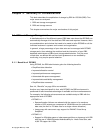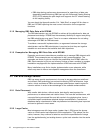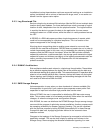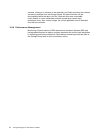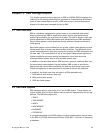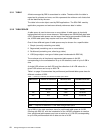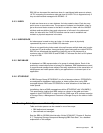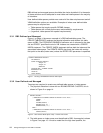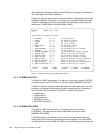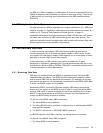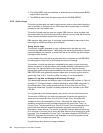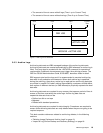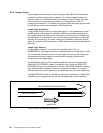
DB2 Storage Objects 13
DB2 V6 has increased the maximum size of a partitioned table space to almost
16 TB, increasing the maximum data set size to 64 GB. This is supported only if
they are defined and managed with DFSMS 1.5.
3.2.3 INDEX
A table can have zero or more indexes. An index contains keys. Each key may
point to one or more data rows. The purpose of indexes is to establish a way to
get a direct and faster access to the data in a table. An index with the UNIQUE
attribute enforces distinct keys and uniqueness of all rows in the referenced
table. An index with the CLUSTER attribute can be used to establish and
maintain a physical sequence in the data.
3.2.4 INDEXSPACE
An index space is used to store an index. An index space is physically
represented by one or more VSAM LDS data sets.
When a non-partitioning index needs to be split across multiple data sets in order
to improve I/O performance, these particular type of data sets are called PIECEs.
DB2 V5 has introduced the capability of defining up to 128 pieces with a
maximum size of 2 GB. DB2 V6 and DFSMS 1.5 increase the limit to 254 pieces
of up to 64 GB.
3.2.5 DATABASE
A database is a DB2 representation of a group of related objects. Each of the
previously named objects has to belong to a database. DB2 databases are used
to organize and manage these objects. Normally a database is the association of
table spaces and index spaces used by an application or a coherent part of an
application.
3.2.6 STOGROUP
A DB2 Storage Group (STOGROUP) is a list of storage volumes. STOGROUPs
are assigned to databases, table spaces or index spaces when using DB2
managed objects. DB2 uses STOGROUPs for disk allocation of the table and
index spaces.
Installations that are SMS managed can define STOGROUP with VOLUMES(*).
This specification implies that SMS assigns a volume to the table and index
spaces in that STOGROUP. In order to do this, SMS uses ACS routines to assign
a Storage Class, a Management Class and a Storage Group to the table or index
space.
3.3 Creating Table Spaces and Index Spaces
Table and index spaces can be created in one of two ways:
• DB2 defined and managed
• User defined and managed
See the DB2 for OS/390 Administration Guide, SC26-8957, Chapter 2, Section
2-7, "Designing Storage Groups and Managing DB2 Data Sets", for a detailed
explanation on this subject.



